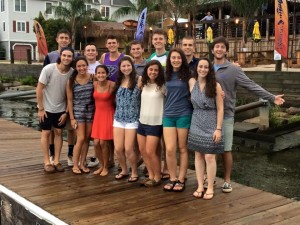Today marks another year in the books for QUEST, a first year summer leadership experience at my university. Each year I’ve served as a peer mentor during QUEST, helping the freshmen in our program to adjust well to campus, become engaged leaders, and develop personal goals for the year.
Each year, the peer mentors and “Questers” go through a training
exercise called Life Defining Moments. During this activity, each person in the group shares an experience, which has changed their life forever. It can be a great experience full of happiness, or a deep secret that few people know. It is an activity filled with emotions, and at the end of it the group feels really well connected, like a family.
This got me thinking… it’s really important to create “Open Doors, Open Hearts” moments in order to build a community where everyone feels welcomed, connected, and engaged.
When was the last time you were open about your emotions with someone on your team? If you said longer then 3 months, you need to look for those opportunities. Here are a few activities to start you off:
- Good News Tangent: This is one that the Swift Kick Team does at our weekly meetings. Everyone must share one good thing that’s happened in their life this past week.
- Diversity Timeline: Instruct team members to create a timeline of the momentous days in their life. Some may include moving to a new state in high school, or getting their first job, or getting into a university, or joining a club on campus. Ask them to go through their timeline and explain how the events on the timeline made them who they are today.
- Game Day Speeches: Assign each person on the team one weekday where they will give a “pump-up speech”, almost as if they are a sports coach. These are great for building team morale and getting everyone energized in the morning.
Give them the opportunity to get mushy and emotional, it will bring them closer together and allow them to understand the rest of team. With an Open Doors, Open Hearts activity, your team will feel like a family of 5’s on the dance floor, versus a group of 2’s, 3’s, and 4’s that are spread very far apart.




